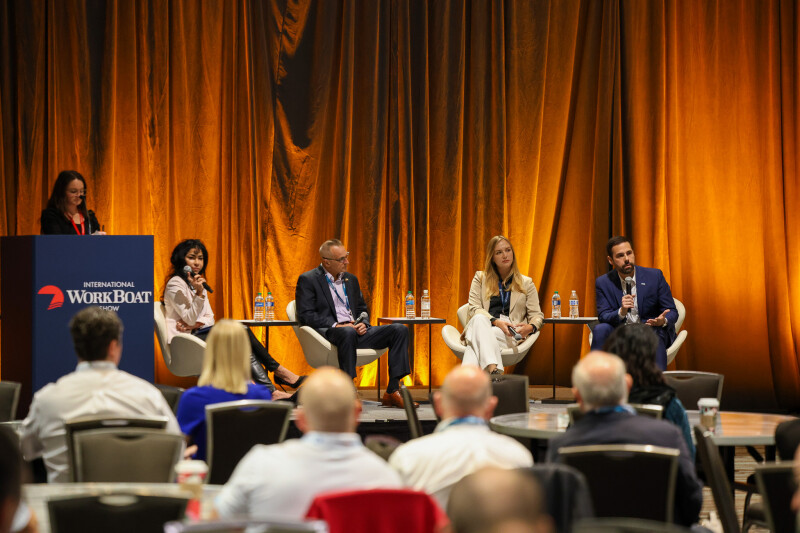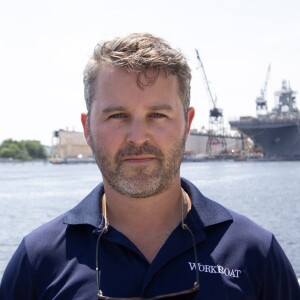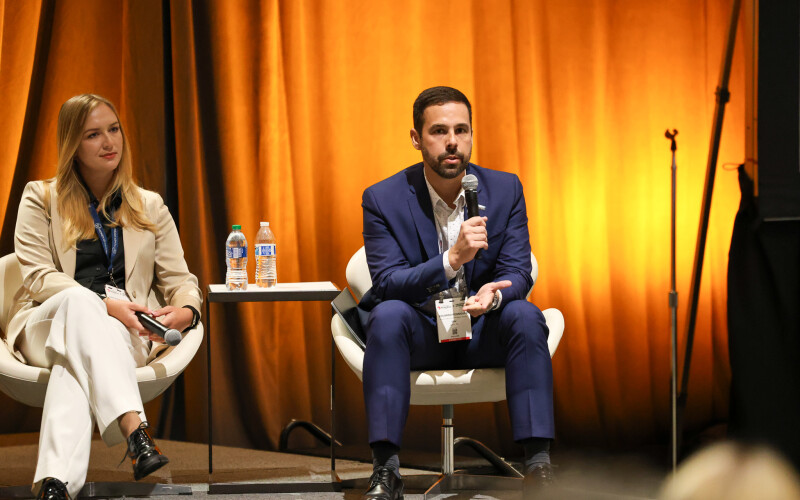Today, almost 90% of containerships are powered by heavy fuel oil. During a typical long-haul transport, a single cargo vessel can emit over 6,000 tons of CO2, in addition to other harmful pollutants and particulates.
Alternative fuels and propulsion methods like ammonia, biofuels, electric power, fuel cells, hydrogen, methanol, and wind can help accelerate decarbonization while simultaneously boosting energy security.
In a conference session titled “Going Green: Alternative Fuels” at the International WorkBoat Show (IWBS) Thursday, challenges that the marine industry faces when adopting these fuels was discussed.

Though these are all cleaner options, issues such as regulation, safety, pricing, infrastructural availability, supply chain constraints, lifecycle emissions, and barriers to adoption must all be considered.
Panelists included Anastasija Kuprijanova, director of maritime business development at Amogy; Rear Adm. John P. Nadeau, president and CEO of Nadeau Maritime; Eduardo Rodrigues, principal consultant at DNV; and Maite Bolivar Klarup, global commercial sales director at e1 Marine.
Kuprijanova asked the crowd to identify their job titles by a show of hands. The packed room was comprised of architects, regulators, shipyard representatives, vessel owners and operators, and fuel suppliers. She acknowledged the variety of roles in the audience involved in this green shift. “There’s going to need to be a lot of collaboration in this process.”
“Where are the green, clean fuels going to be that are going to be affordable and available so that you can make smart decisions moving forward?” Nadeau asked the crowd. “It’s a cloudy picture and it can be quite intimidating for a business.”
Rodrigues also touched on the uncertainty from a regulator’s standpoint. “Whenever you have a new technology introduced into the industry, there’s a fair deal of uncertainty with safety, and these regulations take a while to develop. What we do at DNV is try to address through risk assessments, which we’re currently working with Amogy on, and then we come up with a development of regulations.”

Rodrigues continued, “It is the million-dollar question. When we talk about methanol, ammonia, other renewable gas, biodiesel, do we have enough feedstock to produce these fuels? The maritime industry is very energy intensive. So, the demand for these volumes is very high. At the same time, we will be competing with all other industries, competing with transportation, competing with aviation, agriculture. I understand I don’t sound very optimistic, but it is a challenge.“
“I think this is critical, we can’t talk about cost without talking about carbon cost,” said Kuprijanova of Amogy. “That is something that’s rapidly approaching. Perhaps not as much on the domestic turf.”
Kuprijanova compared the incentives that are propelling owners and operators to look at these future fuels to a ‘carrot on a stick’ approach. “Domestically, we see more of a carrot, that’s looking at the IRA, and looking at some of the incentives that folks have for utilizing clean fuels. At this point in time, we don’t have any regulation that is giving us a realistic approach to move owners and operators forward. In the European arena, it’s quite the contrary, with carbon taxes that are already going to be enforced as soon as next year.”





